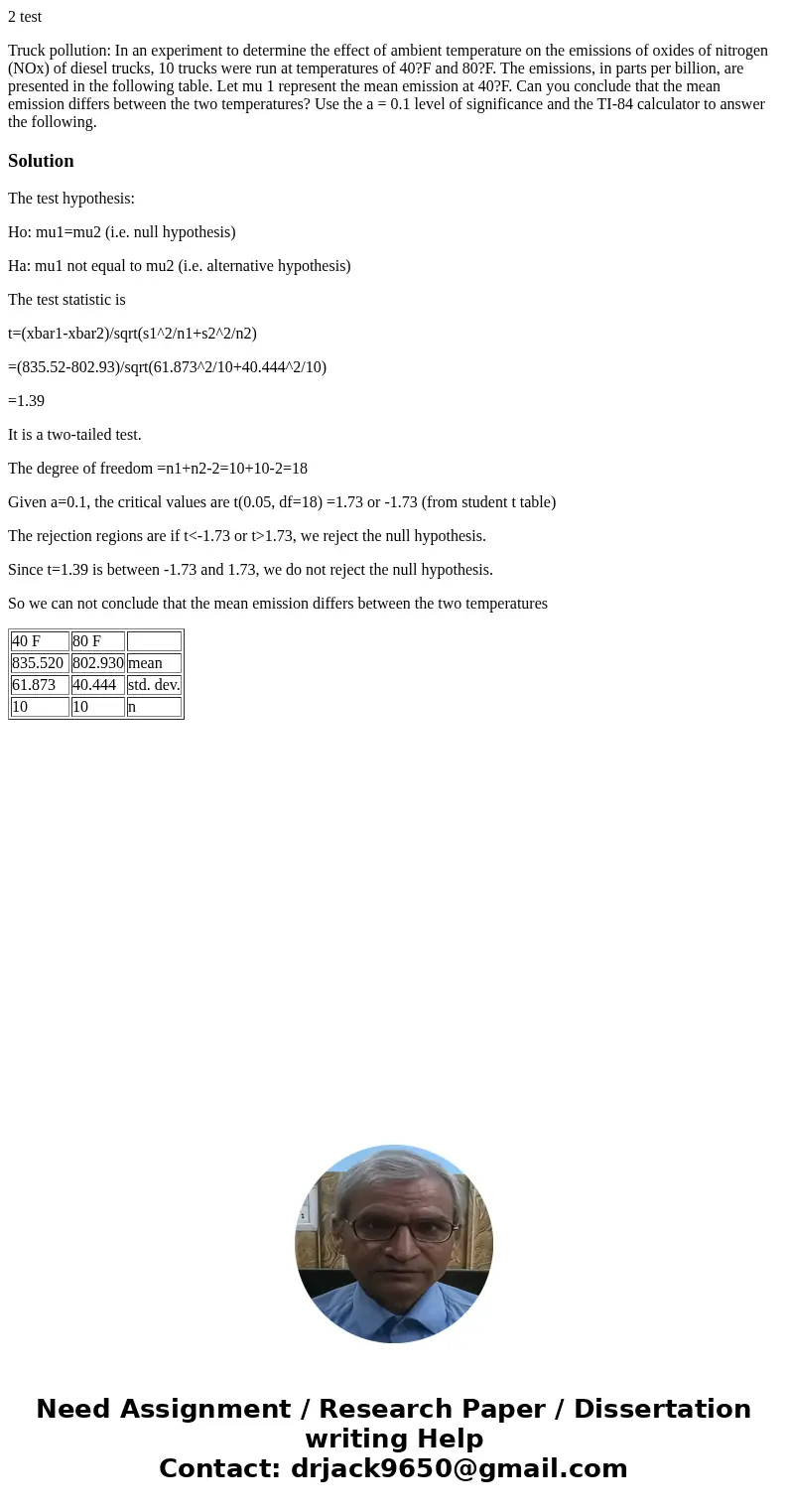2 test Truck pollution In an experiment to determine the eff
2 test
Truck pollution: In an experiment to determine the effect of ambient temperature on the emissions of oxides of nitrogen (NOx) of diesel trucks, 10 trucks were run at temperatures of 40?F and 80?F. The emissions, in parts per billion, are presented in the following table. Let mu 1 represent the mean emission at 40?F. Can you conclude that the mean emission differs between the two temperatures? Use the a = 0.1 level of significance and the TI-84 calculator to answer the following.Solution
The test hypothesis:
Ho: mu1=mu2 (i.e. null hypothesis)
Ha: mu1 not equal to mu2 (i.e. alternative hypothesis)
The test statistic is
t=(xbar1-xbar2)/sqrt(s1^2/n1+s2^2/n2)
=(835.52-802.93)/sqrt(61.873^2/10+40.444^2/10)
=1.39
It is a two-tailed test.
The degree of freedom =n1+n2-2=10+10-2=18
Given a=0.1, the critical values are t(0.05, df=18) =1.73 or -1.73 (from student t table)
The rejection regions are if t<-1.73 or t>1.73, we reject the null hypothesis.
Since t=1.39 is between -1.73 and 1.73, we do not reject the null hypothesis.
So we can not conclude that the mean emission differs between the two temperatures
| 40 F | 80 F | |
| 835.520 | 802.930 | mean |
| 61.873 | 40.444 | std. dev. |
| 10 | 10 | n |

 Homework Sourse
Homework Sourse